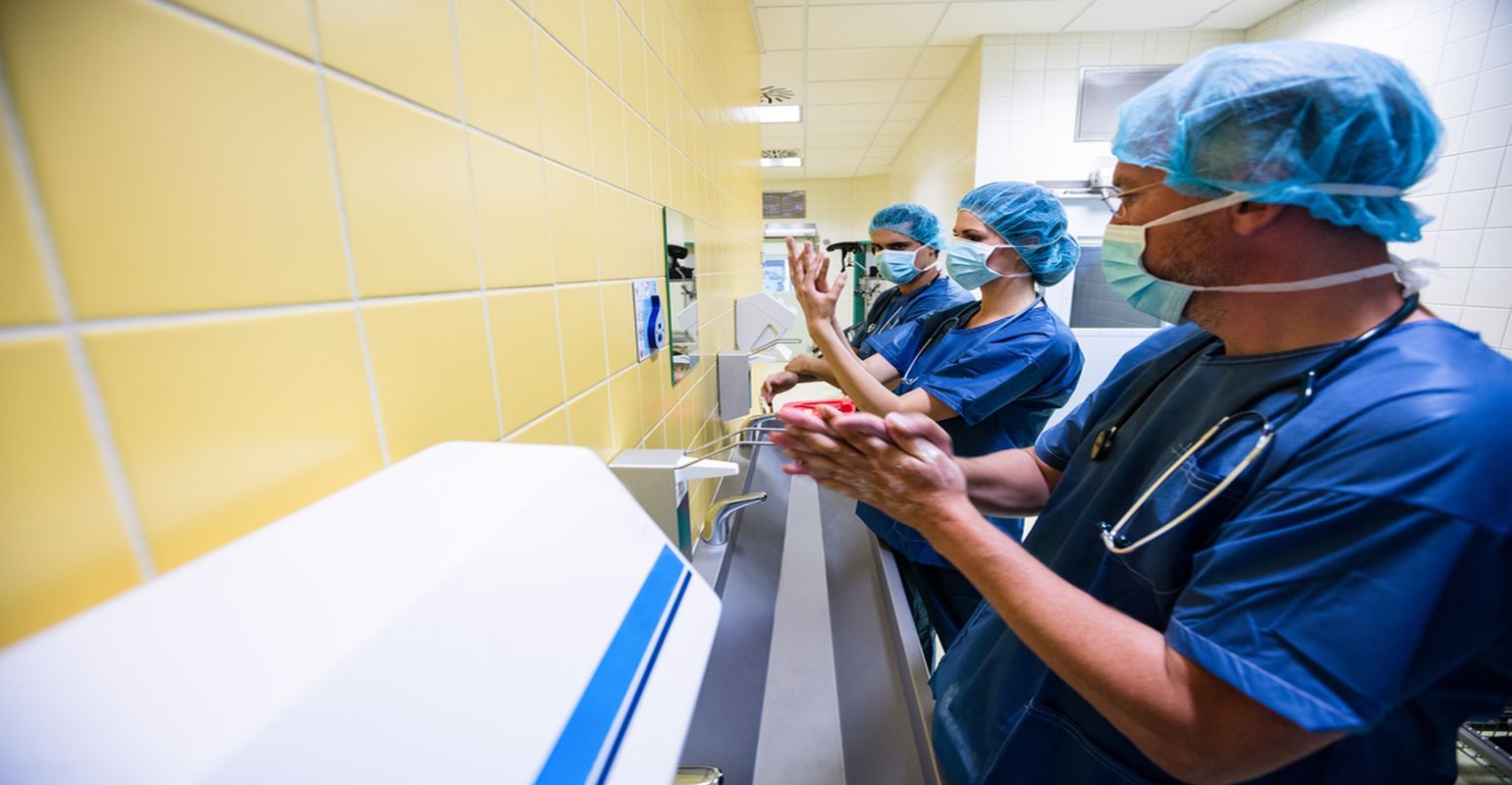Improve Hand Hygiene, Patient Decolonization to Curb S. aureus Transmission in the OR

Adherence to proven protocols for disinfecting surgeons’ hands, patients’ skin, and operating room surfaces could help to halt the spread of dangerous Staphylococcus aureus (S. aureus) pathogens in the operating room and beyond, according to new research published in the American Journal of Infection Control (AJIC), the journal of the Association for Professionals in Infection Control and Epidemiology (APIC).
Despite solid evidence supporting improved practices for hand hygiene, vascular access, and patient skin disinfection, “adherence to evidence-based, basic, preventive measures is abysmal,” University of Iowa researchers report. "These failures may help to explain why up to 7 percent of patients undergoing surgery continue to contract at least one postoperative infection."
In the midst of an increase in the spread of antibiotic-resistant S. aureus pathogens from acute care settings to healthy members of the community, researchers from the University of Iowa Hospitals and Clinics identified and characterized the epidemiology of particularly pathogenic S. aureus sequence types (STs) in the operating room. S aureus isolates were collected from 3 academic medical centers. Transmission dynamics for hyper transmissible, strong biofilm-forming, antibiotic-resistant, and virulent STs were assessed by using a systematic phenotypic and genomic approach combined with a new software platform, OR PathTrac (RDB Bioinformatics, Omaha, NE 68154). The transmission story for these key pathogens was mapped and reported.
“The increase in the spread of S. aureus pathogens beyond the acute-care setting is alarming, but we know that there are evidence-based practices that can address this critical patient safety issue,” said Randy W. Loftus, MD, lead study author. “The goal of the study was to increase awareness around the transmission of the different strains, with the aim of improving compliance with proven infection control measures.”
Loftus and his colleagues found that S. aureus ST 5 is a more pathogenic strain associated with increased strength of biofilm formation and increased risk of transmission and infection. Two of the ST 5 isolates were linked by whole cell genome analysis to postoperative infection, an alarming finding that likely underestimates the true magnitude of the problem. The combination of ST 5 pathogenicity, an aging patient population, and increasingly complex surgical procedures may help to explain the increase in the community spread of invasive methicillin resistant S. aureus infections; vulnerable patients could acquire these pathogens during routine care in the operating room and later develop an infection.
The researchers confirmed patient skin surfaces and healthcare provider hands as sources of ST 5 pathogen transmission. This suggests that strict compliance with processes to decolonize patients of bacteria before surgery and to maintain hand hygiene compliance during surgery will likely help control the spread of this important strain characteristic. They noted as well that operating room environmental surfaces were linked with transmission, indicating the importance of continually assessing the effectiveness of environmental cleaning protocols.
“By understanding the transmission story of an organism, we can identify areas where infection prevention practices can be strengthened,” said 2018 APIC president Janet Haas, PhD, RN, CIC, FSHEA, FAPIC. “To improve outcomes for our patients, we need to continually assess and make process improvements to ensure that we do the right thing for every patient, every time.”
Reference: “High-risk Staphylococcus aureus transmission in the operating room: A call for widespread improvements in perioperative hand hygiene and patient decolonization practices,” by Randy W. Loftus, Franklin Dexter, and Alysha D.M. Robinson, appears in the American Journal of Infection Control, Volume 46, Issue 10 (October 2018).
Bridging the Gap: Operating Room and Central Processing Unite to Improve Surgical Efficiency
April 8th 2025Communication breakdowns between the operating room and central processing led to delays and frustration—until collaboration, cross-training, and shared goals turned metrics around and strengthened teamwork.










